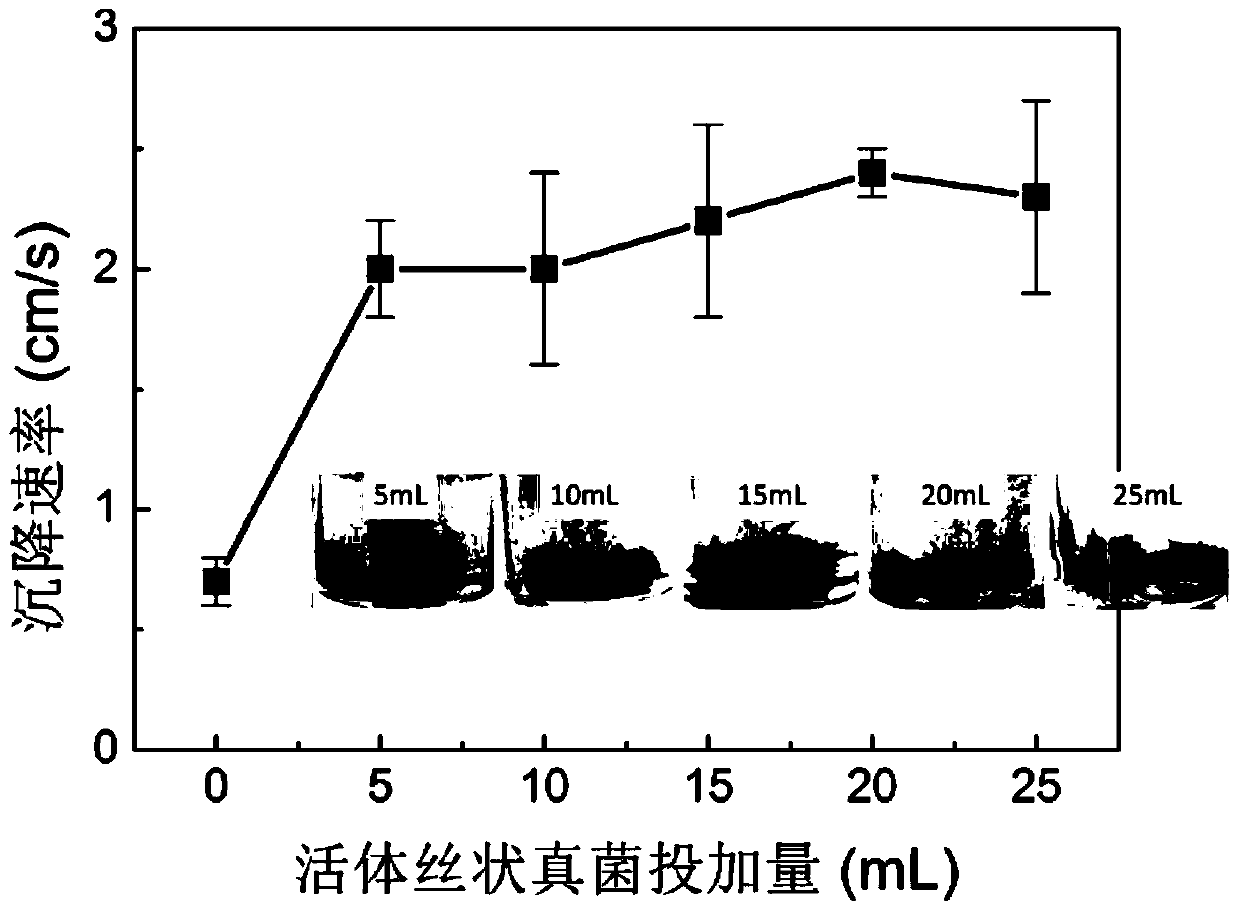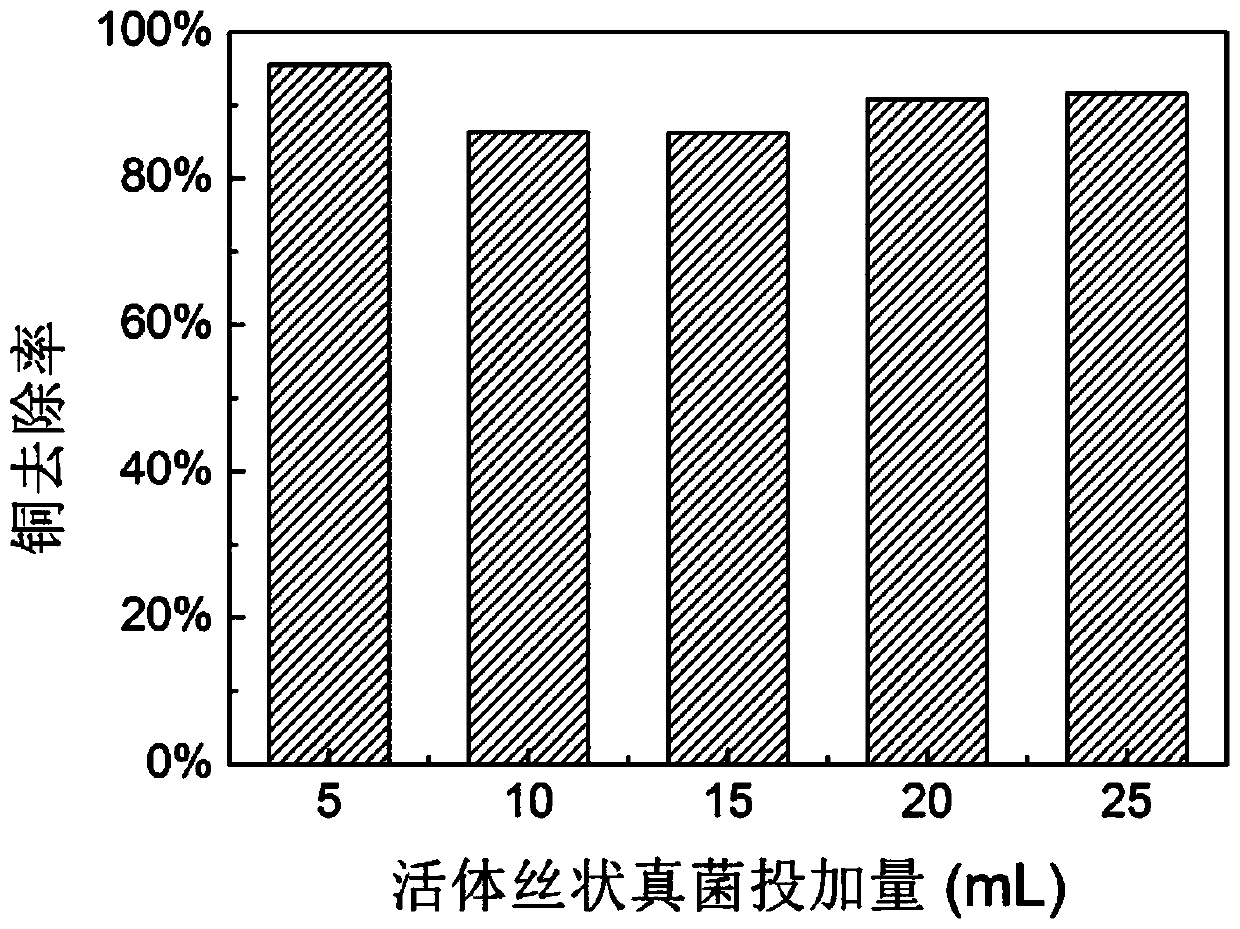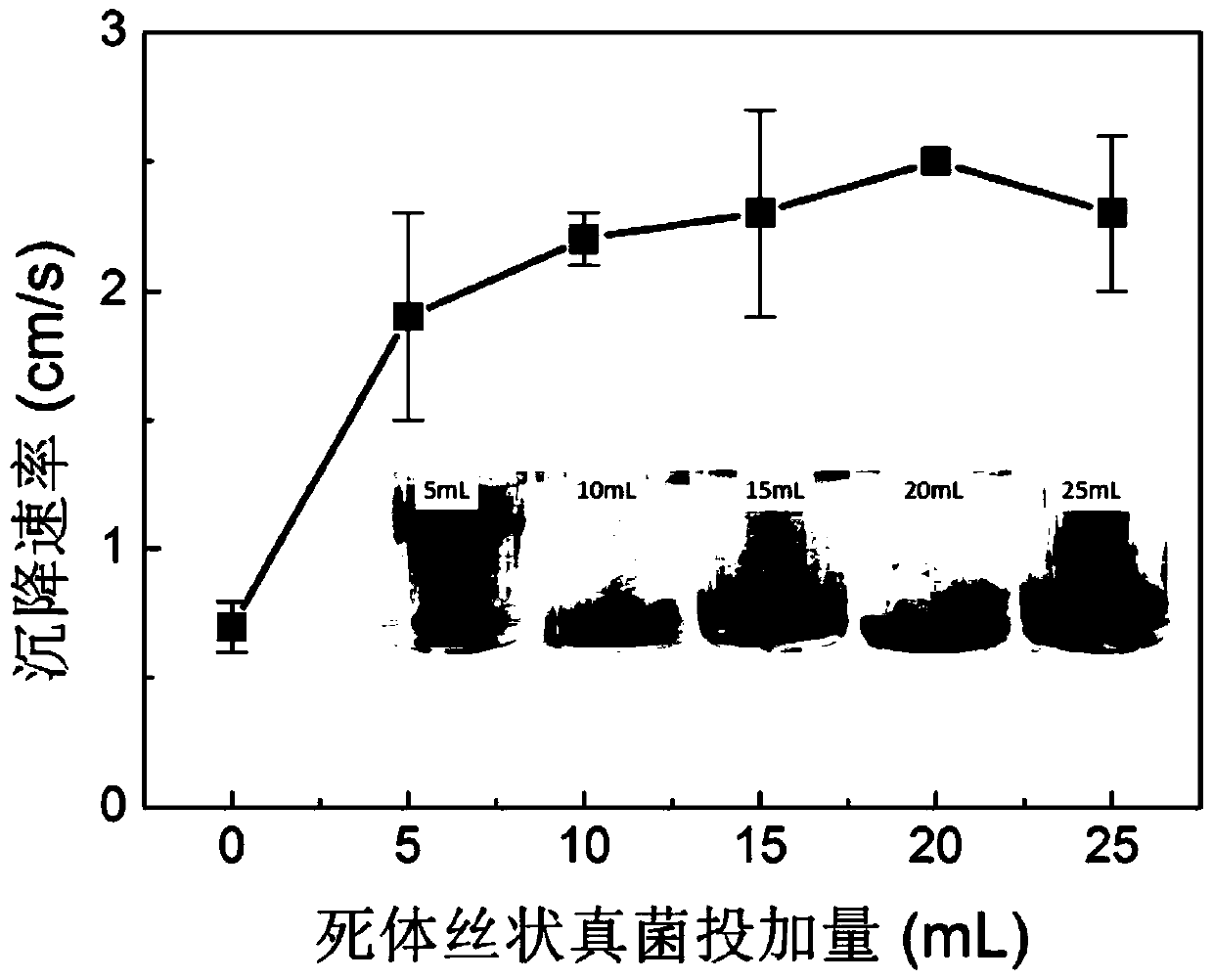A method for treating copper-containing wastewater by using microbial precipitation to form granular sludge
A technology of granular sludge and microbial flocculation, which is used in biological water/sewage treatment, biological treatment devices, water/sludge/sewage treatment, etc. problems, to achieve the effect of clean and sustainable production process, low production cost and stable properties
- Summary
- Abstract
- Description
- Claims
- Application Information
AI Technical Summary
Problems solved by technology
Method used
Image
Examples
Embodiment 1
[0032] Inoculate Aspergillus (CGMCC No.5858) onto potato solid medium at 37°C and cultivate for 7 days to activate. The activated Aspergillus was inoculated into 100mL liquid potato medium, and cultured at 30°C for 3 days. After 3 days of growth, Aspergillus formed loose mycelium balls. Use 1500rpm magnetic stirring to disperse large mycelium balls to obtain loose mycelium. Take 5 mL of the dispersed bacterial liquid and re-inoculate it into 100 mL of liquid potato medium, and incubate at 30°C for 48 hours to form a large number of small mycelial balls with a diameter of about 2 mm. Adjust the pH value of the living filamentous fungus to 11.0±0.2. The living filamentous fungus is stored in a Erlenmeyer flask for future use.
[0033] A reaction beaker is placed on a constant temperature magnetic stirrer, and 100 mL of the suspension containing CuO is added thereto (solid concentration is 2.5 g / L). The reaction temperature was controlled at 25° C., and the rotational speed of...
Embodiment 2
[0036]Inoculate Aspergillus (CGMCC No.5858) onto potato solid medium at 37°C and cultivate for 7 days to activate. The activated Aspergillus was inoculated into 100mL liquid potato medium, and cultured at 30°C for 3 days. After 3 days of growth, Aspergillus formed loose mycelium balls. Use 1500rpm magnetic stirring to disperse large mycelium balls to obtain loose mycelium. Take 5 mL of the dispersed bacterial liquid and re-inoculate it into 100 mL of liquid potato medium, and culture it at 30°C for 48 hours to form a large number of small mycelial balls with a diameter of about 2 mm. Glutaraldehyde solution was added for inactivation. The concentration of glutaraldehyde after addition was 2.5%. It was left standing at room temperature for 6 hours, and its pH value was adjusted to 11.0±0.2. The inactivated mycelium was placed in a glass bottle for later use.
[0037] A reaction beaker was placed on a constant temperature magnetic stirrer, and 100 mL of a suspension containing...
PUM
| Property | Measurement | Unit |
|---|---|---|
| diameter | aaaaa | aaaaa |
| sedimentation rate | aaaaa | aaaaa |
Abstract
Description
Claims
Application Information
 Login to View More
Login to View More - R&D Engineer
- R&D Manager
- IP Professional
- Industry Leading Data Capabilities
- Powerful AI technology
- Patent DNA Extraction
Browse by: Latest US Patents, China's latest patents, Technical Efficacy Thesaurus, Application Domain, Technology Topic, Popular Technical Reports.
© 2024 PatSnap. All rights reserved.Legal|Privacy policy|Modern Slavery Act Transparency Statement|Sitemap|About US| Contact US: help@patsnap.com










